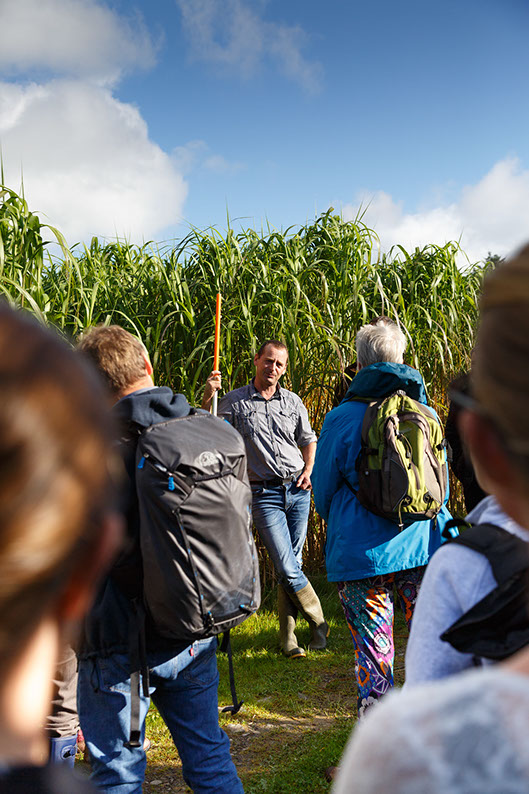

M i s c a n t h u s B r e e d i n g

Miscanthus for Wales? | Miscanthus i Gymru?

Field visit and information day | Taith maes a diwrnod gwybodaeth





Miscanthus and bioenergy
Biomass derived energy contributes to the global effort to provide renewable zero carbon energy.
Low input perennial energy crops, particularly the giant grass Miscanthus, will be an essential part of the mix of raw materials needed for producing bioenergy in the UK and elsewhere in the world.
Energy crops also provide an important option for farmers with environmental benefits such as fossil fuel carbon substitution and soil carbon sequestration (depending on previous land use).
Miscanthus has low requirements for nutrients as a result of efficient recycling of nutrients from above ground biomass to below ground rhizomes in the autumn and winter, with harvest of above ground biomass in late winter or early spring.
Our research contributes towards the delivery of new varieties of Miscanthus which maximise the sustainable net energy yield per hectare in a wide range of conditions in the UK including marginal lands.
Our aim is to double the net energy yield of Miscanthus by 2030.
This is physiologically achievable with the use of appropriate germplasm and the use of precision breeding using the association between molecular markers and phenotypic traits, and development of agronomic methods to reduce establishment losses from clones and seed based varieties.
Increased net energy yield will have a major impact on the economics of Miscanthus in terms of returns per hectare and produce an incentive to the growing of Miscanthus without the need for planting grants to support the initial establishment of the crop.




M i s c a n t h u s B r e e d i n g t o p r o v i d e s u s t a i n a b l e g l o b a l b i o e n e r g y f o r t h e f u t u r e
